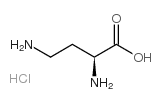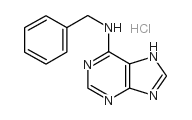| 结构式 | 名称/CAS号 | 全部文献 |
|---|---|---|
 |
L-2,4-二氨基丁酸 单盐酸盐
CAS:1482-98-0 |
|
 |
6-苄氨基嘌呤 盐酸盐
CAS:162714-86-5 |
|
![1,1'-[1,4-亚苯基双(亚甲基)]双(1-吡啶鎓)二溴化物 结构式](https://image.chemsrc.com/caspic/079/14208-10-7.png) |
1,1'-[1,4-亚苯基双(亚甲基)]双(1-吡啶鎓)二溴化物
CAS:14208-10-7 |
|
![N-甲基-9H-吡啶[3,4-b]吲哚-3-甲酰胺 结构式](https://image.chemsrc.com/caspic/334/78538-74-6.png) |
N-甲基-9H-吡啶[3,4-b]吲哚-3-甲酰胺
CAS:78538-74-6 |